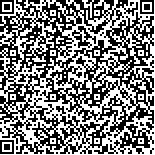| 引用本文: | 唐坚,王月圆,陈钱,章静,王书桥,王晓飞,尤华强.远程多媒体电子知情同意的知晓率和满意度模拟调研[J].中国现代应用药学,2022,39(21):2787-2792. |
| TANG Jiana,WANG Yueyuan,CHEN Qian,ZHANG Jing,WANG Shuqiao,WANG Xiaofei,YOU Huaqiang.Simulation Research on Awareness Rate and Satisfaction with Remote Multimedia Electronic Informed Consent[J].Chin J Mod Appl Pharm(中国现代应用药学),2022,39(21):2787-2792. |
|
| |
|
|
| 本文已被:浏览 1485次 下载 961次 |

码上扫一扫! |
|
|
| 远程多媒体电子知情同意的知晓率和满意度模拟调研 |
|
唐坚1, 王月圆2, 陈钱3, 章静2, 王书桥2, 王晓飞2, 尤华强2
|
|
1.杭州市临平区第一人民医院, 重症医学科, 杭州 311100;2.杭州市临平区第一人民医院, 消化内科, 杭州 311100;3.杭州市临平区第一人民医院, 药剂科, 杭州 311100
|
|
| 摘要: |
| 目的 在电子知情同意模式广泛使用和新型冠状病毒影响药物临床试验的背景下,评估远程多媒体电子知情同意模式与传统知情同意模式的应用效果。方法 进行1项涉及到近6个月内消化内科的就诊患者的随机对照试验。受试者被随机分配到2种知情同意模式中的一种。干预组的受试者将通过远程电子知情同意小程序完成知情同意,对照组的受试者在医师的当面告知下完成知情同意。本试验的研究成果是2组调查对象的知情知晓率和满意度的调查问卷结果。结果 101名受试者被招募参加本次研究(干预组,n=51;对照组,n=50)。与对照组相比,干预组的受试者表现出较高的满意度,但不存在显著的统计学差异;干预组的受试者表现出更好的知情知晓率(知晓率中位数,干预组50.00% vs对照组37.50%),并观察到显著差异(P<0.001)。通过对年龄(≥50岁,<50岁)、性别和学历(本科及以上、专科、高中及以下)进行分层分析,干预组低学历(专科及以下)、中老年和女性群体的知情知晓率远高于对照组,且差异有统计学意义。结论 本次研究证实了远程电子知情同意模式的可行性和提高受试者知情知晓度的应用效果。电子知情同意可以提供更便利的知情同意方式,并节省受试者参与临床试验的成本。为了满足更多目标人群的需求,未来对电子知情同意的优化和研究是有价值的。 |
| 关键词: 电子知情同意 知情知晓度 满意度 临床试验 |
| DOI:10.13748/j.cnki.issn1007-7693.2022.21.013 |
| 分类号:R969.4 |
| 基金项目:杭州市卫生科技计划一般项目(B20220351) |
|
| Simulation Research on Awareness Rate and Satisfaction with Remote Multimedia Electronic Informed Consent |
|
TANG Jiana1, WANG Yueyuan2, CHEN Qian3, ZHANG Jing2, WANG Shuqiao2, WANG Xiaofei2, YOU Huaqiang2
|
|
1.The First People's Hospital of Linping District, Department of Critical Care Medicine, Hangzhou 311100, China;2.The First People's Hospital of Linping District, Department of Gastroenterology, Hangzhou 311100, China;3.The First People's Hospital of Linping District, Department of Pharmacy, Hangzhou 311100, China
|
| Abstract: |
| OBJECTIVE To evaluate the application effect of remote multimedia electronic informed consent mode and traditional informed consent mode in the context of the widespread use of electronic informed consent and the impact of COVID-19 on drug clinical trials. METHODS A randomized controlled trial involving patients presenting to a gastroenterology department within the last 6 months was conducted. Subjects were randomly assigned to one of two informed consent modalities. The subjects in the intervention group would complete the informed consent through the remote electronic informed consent applet, and the subjects in the control group would complete the informed consent under the in-person notification of the doctor. The research results of this experiment were the results of questionnaires on the awareness and satisfaction of the two groups of respondents. RESULTS A total of 101 subjects were recruited to participate in the study (intervention group, n=51; control group, n=50). Compared with the control group, subjects in the intervention group showed high satisfaction with no statistically significant difference, but they showed better awareness (median correct rate: intervention group 50.00% vs control group 37.5%), and the difference remained statistically significant(P<0.001). Through a stratified analysis of age(≥50 years old, <50 years old), gender and education(undergraduate and above, junior college, high school and below), the low education(junior college and below), elderly and female groups of intervention group had higher rate of informed awareness than those of control group, and the difference was statistically significant. CONCLUSION This study confirms the feasibility of the electronic informed consent model and the application effect of improving the subject’s informed awareness. electronic informed consent can provide a more convenient way of informed consent and save the cost of subjects participating in clinical trials. To meet the needs of more target populations, future optimization and research on electronic informed consent is valuable. |
| Key words: electronic informed consent informed awareness satisfaction clinical trials |
|
|
|
|
